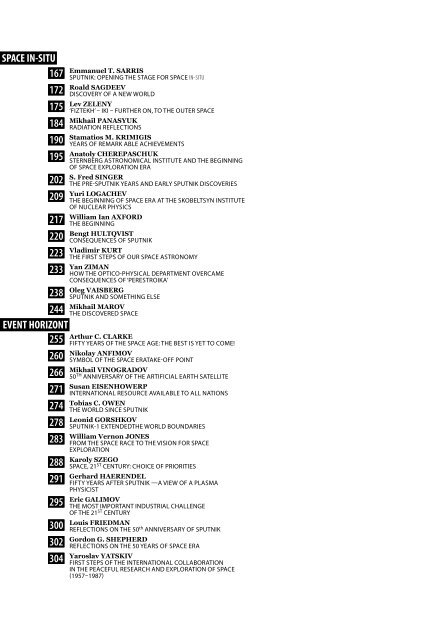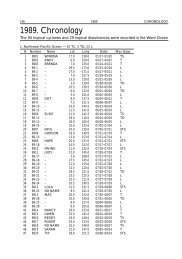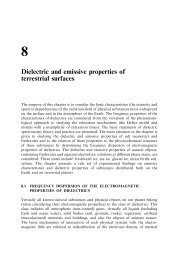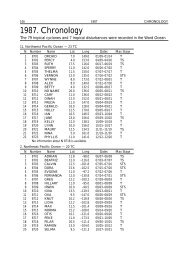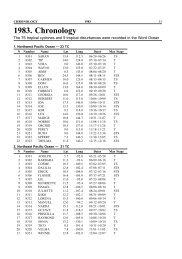basic sputnik
basic sputnik
basic sputnik
You also want an ePaper? Increase the reach of your titles
YUMPU automatically turns print PDFs into web optimized ePapers that Google loves.
SPACE IN-SITU<br />
167<br />
172<br />
175<br />
184<br />
190<br />
195<br />
202<br />
209<br />
217<br />
220<br />
223<br />
233<br />
238<br />
244<br />
EVENT HORIZONT<br />
255<br />
260<br />
266<br />
271<br />
274<br />
278<br />
283<br />
288<br />
291<br />
295<br />
300<br />
302<br />
304<br />
Emmanuel T. Sarris<br />
Sputnik: Opening the Stage for Space In-Situ<br />
Roald Sagdeev<br />
Discovery of a New World<br />
Lev Zeleny<br />
‘Fiztekh’ – IKI – Further On, to the Outer Space<br />
Mikhail Panasyuk<br />
Radiation Reflections<br />
Stamatios M. Krimigis<br />
Years of remark able achievements<br />
Anatoly Cherepaschuk<br />
Sternberg Astronomical Institute and the beginning<br />
of space exploration era<br />
S. Fred Singer<br />
The Pre-Sputnik Years and Early Sputnik Discoveries<br />
Yuri Logachev<br />
The Beginning of Space Era at the Skobeltsyn Institute<br />
of Nuclear Physics<br />
William Ian Axford<br />
The Beginning<br />
Bengt Hultqvist<br />
Consequences of Sputnik<br />
Vladimir Kurt<br />
The first steps of our space astronomy<br />
Yan Ziman<br />
How the Optico-Physical Department Overcame<br />
Consequences of ‘Perestroika’<br />
Oleg Vaisberg<br />
Sputnik and Something Else<br />
Mikhail Marov<br />
The Discovered Space<br />
Arthur C. Clarke<br />
Fifty Years of the Space Age: The Best is Yet to Come!<br />
Nikolay Anfimov<br />
Symbol of the Space EraTake-off Point<br />
Mikhail Vinogradov<br />
50 th Anniversary of the Artificial Earth Satellite<br />
Susan Eisenhowerр<br />
International Resource Available to All Nations<br />
Tobias C. Owen<br />
The World Since Sputnik<br />
Leonid Gorshkov<br />
Sputnik-1 extendedthe world boundaries<br />
William Vernon Jones<br />
From the Space Race to the Vision for Space<br />
Exploration<br />
Karoly Szego<br />
Space, 21 st Century: Choice of Priorities<br />
Gerhard Haerendel<br />
Fifty Years After Sputnik —A View of a Plasma<br />
Physicist<br />
Eric Galimov<br />
The most important industrial challenge<br />
of the 21 st century<br />
Louis Friedman<br />
Reflections on the 50 th Anniversary of Sputnik<br />
Gordon G. Shepherd<br />
Reflections on the 50 Years of Space Era<br />
Yaroslav Yatskiv<br />
First steps of the international collaboration<br />
in the peaceful research and exploration of space<br />
(1957–1987)<br />
Introduction<br />
Right after completing the first revolution of the<br />
First artificial satellite TASS news agency announced ‘...The first <strong>sputnik</strong> was successfully<br />
launched in the USSR on October 4, 1957. By preliminary data,<br />
the rocket vehicle has provided Sputnik with necessary orbital speed,<br />
about 8000 metres per second. Now Sputnik gyrates on elliptic trajectories<br />
round the Earth, and its flight can be observed at dawn and sunset<br />
by means of elementary optical instruments (field-glasses, telescopes,<br />
etc.)…’ It seemed that the entire world observed small bright point, floating in the<br />
night sky fifty years ago, listened to simple signals ‘beep-beep’, knowing that those<br />
sounds were sent by a new celestial body. It was extremely amazing that this celestial<br />
body was artificial, that is created by hands of humans. Then, in the beginning of<br />
October, 1957 billions of people suddenly felt themselves a part of mankind, citizens<br />
of the planet Earth standing on the threshold of vast, but already becoming accessible<br />
Universe.<br />
Not everybody understood then the implications<br />
of this event, but the feeling that something enormous was happening, an event<br />
of really ‘cosmic’ scale, stayed with the almost all the people on earth. Activity of the<br />
mankind always striving to new discoveries, conquering new frontiers developed ‘new<br />
degree of freedom’, ‘new dimension’. This event enabled to create a new science —<br />
space research and to pave the way to unthinkable opportunities, i.e. to look behind<br />
dense curtain of terrestrial atmosphere and to reveal <strong>basic</strong> knowledge about the Universe,<br />
to send robots to the bodies of the Solar system, to take a walk on the surface<br />
of the Moon and to build feasible plans of manned flights to neighbor planet in the<br />
nearest decades. Undoubtedly and at the same time surprisingly enough the launch<br />
of Sputnik in the frame of International Geophysical Year 1957–1958 acquired great<br />
meaning not only for a limited community of scientists, but also, without exaggeration,<br />
for all mankind. That was the event which gave rise to new branches of industry<br />
and usage of space practically in all the fields of human activity. Surprising aspect of<br />
the Sputnik story was that space race of the Great Powers was a peaceful, ‘cold’ battle,<br />
giving confidence to the nations, involved in this confrontation, that the third world<br />
war was impossible. It took half a century after the first Sputnik — an instant from<br />
the historical point of view — for dozens of countries to become members of ‘space<br />
club’, and space exploration to become day-to-day routine.


